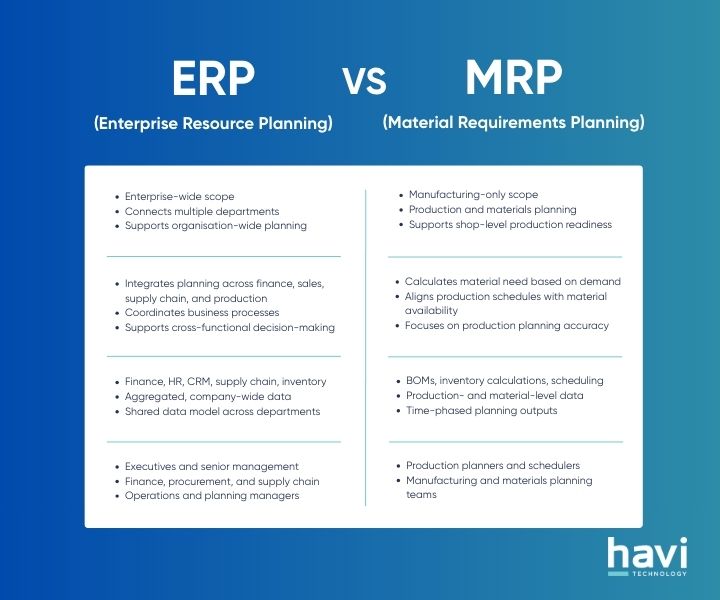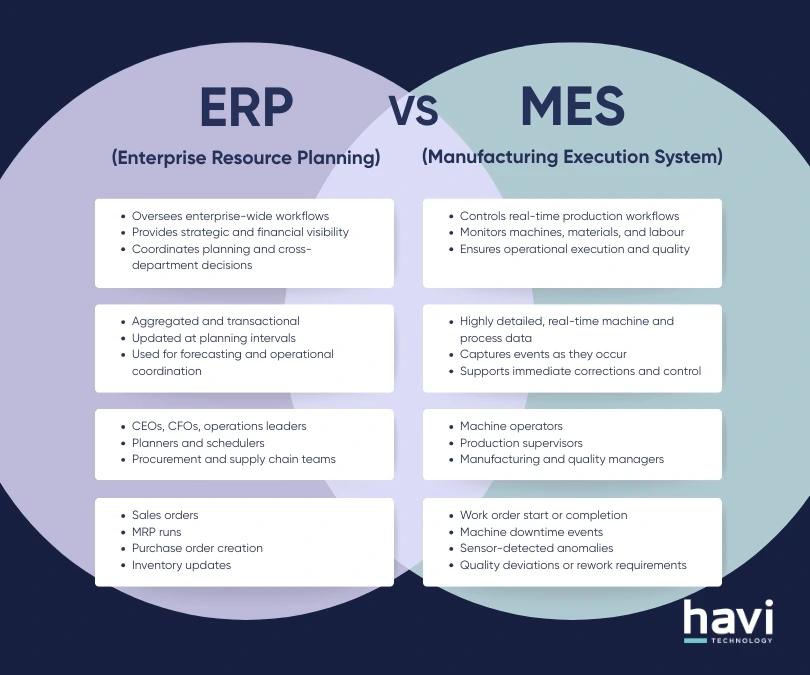TABLE OF CONTENTS
- 1. Website and Customer Experience
- 1.1. Website & eCommerce: Guided Onboarding, New Templates, Google Merchant Sync
- 1.2 Live Chat and Discuss: Expertise Routing, Chat Insights, Status Controls
- 2. Sales, CRM and Subscriptions
- 2.1 Sales: Editable Optional Products, Catalogue Sections, Portal Top-Up
- 2.2. CRM and Marketing: AI Probability, Lead Sources, Kanban Linking
- 2.3. Subscriptions: Prorated Billing, One-Time Sales, Portal Edits
- 3. Inventory, Purchase and Barcode
- 3.1. Inventory and Purchase: Packages within Packages, Forecasted Reports, Suggested Quantity to Replenish
- 3.2. Barcode: Operation Descriptions, Product Source Location, Lot and Serial Number Properties
- 4. Manufacturing, Shop Floor & Planning
- 4.1. MRP: Gantt View, Editable Deadlines, Labour-Based Valuation
- 4.2. Shop Floor & Planning: Barcode Workflows, Shift Scheduling, Routing Edits
- 5. Project, Timesheets and Services
- 5.1. Project and Timesheet: Smart Assign, Mobile Grid View, Priority Alerts
- 5.2. Field Service and Appointments: Calendar View, Technician Tracking, Mass Planning
- 6. HR, Payroll and Expenses
- 6.1. Payroll: Redesigned Engine, Payslip Correction, Unified Master Report
- 6.2. Time Off and Expenses: Odoo Master Cards, Multi-Expense Submission, Complex Duration
- 7. Accounting, Compliance and ESG
- 7.1. Accounting: Peppol Invoicing, Bank Sync, BAS Reports
- 7.2. ESG App: Scope 1–3 Emissions, CSRD Reporting, Auto Category Mapping
- 8. AI, Documents and Sign
- 8.1. AI App: Prompt Commands, Auto Field Completion, Voice and Web Search
- 8.2. Sign and Documents: Bulk Signing, Chatter Integration, Access Controls
- Odoo 19: What’s Coming For Australia?
- 1. Fully compliant Payroll AU with STP Phase 2 and SuperStream
- 2. ABA file payments, Direct Debit for wages/super
- 3. Multi-stream YTD import, backpay, and validations
- 4. 2025–26 tax rules, STSL changes, ATO security
- 5. Peppol invoicing, GST toggle, fringe benefits, BAS automation
- 6. Tyro integration
- 7. Roadmap: SBR BAS lodging, Open Banking, PEL Access, Fiduciary Program
- Odoo 19’s FAQs For Australian Teams
- 1. How should Australian businesses prepare?
- 2. How is Odoo 19 different from Odoo 18 in Australia?
- 3. How can AI in Odoo 19 be tailored for real business outcomes?
- 4. How can I try Odoo 19 or upgrade from my current version?





Key Takeaways
Photo by CoWomen from Pexels
What is a CMS (Content Management System)?
A Content Management System (CMS) is software designed to simplify the creation, management, and optimisation of digital content. Its primary purpose is to empower businesses to efficiently handle their front-end operations, such as website design, content publishing, and SEO, without needing extensive technical expertise.
As businesses increasingly rely on digital experiences to engage customers, CMS platforms have become essential. According to Forrester Research, 69% of global B2C decision-makers increased their CMS investment in 2024, up from 59% in 2023, with the web content management market projected to hit $15.3 billion by 2028.
Whether powering an eCommerce store, blog, or corporate website, CMS platforms enhance user engagement, streamline content management, and support business growth by providing intuitive, scalable solutions.
Key features of a CMS
A CMS is built to simplify and enhance how businesses manage their digital content, making it a crucial tool for organisations focused on improving their online presence. Its core features cater to a variety of needs, from content management to eCommerce functionality.
Feature
How It Helps Businesses
Content management
Streamlines how businesses create, edit, and schedule content like blogs, product descriptions, or multimedia.
Website design
Offers customisable layouts, themes, and branding options to create websites that align with a business’s identity.
SEO optimisation tools
Built-in SEO tools improve search engine visibility by optimising metadata, keywords, and image tags.
E-commerce capabilities
Platforms like Shopify or WooCommerce offer specialised tools to manage product listings, shopping carts, and checkout processes.
Third-party integrations
Connects with tools like Google Analytics, CRM systems, and payment gateways for expanded functionality.
Common goals for CMS adoption + Popular examples
Businesses adopt CMS platforms because they simplify managing digital content, enhance user engagement, and support scalability.
First, CMS tools eliminate the need for coding, offering intuitive interfaces for content creation, publishing, and scheduling. This allows teams to focus on strategy and creativity instead of technical tasks.
Second, a CMS enables businesses to enhance user engagement by delivering seamless, personalised experiences across websites and online stores. Features like customisable designs, SEO optimisation, and e-commerce integrations help improve customer interaction and satisfaction.
Lastly, CMS platforms help businesses optimise for growth by offering scalable solutions that handle increasing website traffic and sales. As businesses expand, CMS tools ensure their online presence grows without compromising functionality or performance.
Examples in action:
What is an ERP?
Enterprise Resource Planning (ERP) is a software system that centralises and streamlines core business operations. It integrates processes like inventory management, financial tracking, human resources, and supply chain management into a unified platform.
The primary focus of ERP systems is on back-end operations, ensuring that every department has access to accurate, real-time data for better collaboration and productivity. For instance, ERP systems automate tasks such as order tracking and financial reporting, freeing teams to focus on strategic initiatives.
Key features of an ERP
Feature
Description
Inventory management
Tracks and updates stock levels in real-time, preventing overstocking or shortages.
Financial management
Automates accounting, budgeting, and reporting to ensure compliance and improve decision-making.
Supply chain management
Coordinates logistics, procurement, and supplier relationships to streamline operations.
Manufacturing
Supports production planning, work order management, and quality control, improving efficiency in factory operations
Sales
Manages customer orders, pricing, invoicing, and sales pipeline tracking, ensuring seamless transactions
Advanced reporting
Provides real-time analytics and dashboards for better forecasting and planning.
These features not only improve operational efficiency but also ensure that businesses can respond quickly to market changes, optimise resources, and scale effectively.
Common goals for ERP adoption + Popular examples
Many businesses use ERP systems to centralise their processes, improve efficiency, and ensure consistent data.
ERP automates core processes like accounting, inventory management, and procurement, reducing manual errors and saving time. It also centralises real-time data, helping teams make better decisions and accurate forecasts. By integrating finance, HR, sales, and supply chain management, ERP improves collaboration across departments.
As businesses grow, ERP systems provide the scalability needed to handle complex operations while keeping workflows efficient.
Popular ERP platforms are:
CMS vs ERP Comparison in Features and Functionalities
1. Similarities Between CMS and ERP
Despite serving distinct purposes, CMS and ERP share several foundational similarities. These common traits complement them when integrated, providing businesses with streamlined processes and better operational control.
Aspect
How CMS and ERP are similar
Deployment model
Both systems offer flexible deployment options, including on-premises or cloud-based solutions.
Automation
CMS and ERP systems automate repetitive tasks to improve efficiency
Centralised data management
Both CMS and ERP centralise data in their respective domains to ensure data consistency. ERP systems store business data (e.g., manufacturing, sales, inventory, financials), while CMS manages content data (e.g., blog posts, web pages, eCommerce orders, payments).
Scalability
Both platforms are designed to scale with growing business demands, handling larger data volumes and supporting more users as organisations expand.
Customisation
CMS and ERP systems offer customisable options to align with specific business workflows
2. Differences between CMS and ERP
While CMS and ERP systems share some foundational similarities, their core purposes, users, and functionalities differ significantly. These differences make them complementary but distinct tools for managing business operations.
Category
CMS (Content Management System)
ERP (Enterprise Resource Planning)
Core focus
Manages front-end operations, such as website design, content creation, and user experience
Manages back-end operations, including inventory, finance, supply chain management and more.
Primary users
Marketers, content creators, eCommerce managers
Operations managers, finance teams, and supply chain managers.
Data scope
Focuses on unstructured data like text, images, and multimedia for websites and eCommerce
Deals with structured data, such as financial records, inventory levels, and sales reports.
Key features
Content publishing, SEO tools, website customisation, and basic eCommerce capabilities
Inventory tracking, financial planning, supply chain management, and advanced reporting.
Implementation scope
Typically limited to customer-facing platforms like websites, blogs, and online stores
Covers all business operations, from sales, inventory, and procurement to payroll and compliance.
Integrations
Connects with marketing tools, social media platforms, and eCommerce extensions
Integrates with CRM systems, accounting software, and HR management tools.
Compliance
Ensures compliance with web standards like accessibility, privacy, and SEO guidelines
Focuses on industry and regulatory compliance, such as tax laws and financial reporting standards.
These distinctions illustrate how CMS and ERP serve different yet complementary roles in a business. While CMS ensures engaging customer-facing experiences, ERP powers the operational backbone that supports these interactions.
Should You Combine CMS and ERP Integration?
1. Evaluate your current systems and needs
Integrating CMS and ERP systems is not always necessary, but for many businesses, it can provide transformative benefits. Before deciding, you need to evaluate your existing systems and integration needs.
Let’s ask yourself some questions:
If yes, here’s a practical example: An e-commerce store using Shopify integrates with its ERP system to deliver personalised customer experiences, handle complex product pages, and optimise inventory and procurement processes. In fact, we helped our clients integrate Odoo with Shopify for streamlined operations.
2. Is CMS and ERP integration truly right for you?
To decide if integration is worth pursuing, you can weigh the potential benefits against the challenges:
Benefits
Challenges
Integration is most beneficial for businesses with growing complexities and data synchronisation needs. However, if your current systems meet your needs, standalone CMS and ERP may remain sufficient.
How should you approach CMS ERP integration?
1. Key steps for preparing integration
Once you’ve decided to integrate CMS and ERP systems, a structured preparation process is crucial to ensure success.
Step 1: Assess system compatibility
If your systems cannot communicate effectively, it can lead to delays, errors, and inefficiencies, reducing the benefits of integration. You should check if your CMS and ERP offer robust APIs for seamless data exchange, assess whether they have built-in integration features, and, if needed, explore middleware solutions to bridge any gaps.
Step 2: Define integration goals
Next, you need to define clear integration goals that align with your business objectives. Are you looking to automate workflows and eliminate manual tasks? Do you need real-time synchronisation of product availability, pricing, and order data to enhance the customer experience? Setting specific objectives helps ensure you choose the right integration approach.
Step 3: Plan for scalability
Finally, you must plan for scalability to prevent costly reinvestments as your business grows. Ask yourself: Can this integration handle increased data volumes and users over time? Is it flexible enough to evolve with new technologies and changing business needs? Choosing a scalable and adaptable solution ensures your integration remains efficient and sustainable in the long run.
2. Integration options: In-house vs external expertise
Depending on the complexity of your workflows and the resources available, you’ll need to decide whether to handle the integration in-house or hire external experts.
Option
What it involves
Best for
In-house integration
Use internal IT resources to implement the integration through available tools or basic connections.
Businesses with experienced technical teams and straightforward workflows.
Engage external experts
Partner with specialised providers like Havi Technology to design and implement custom integrations tailored to your business.
Companies with complex systems, limited IT resources, or businesses seeking custom integration solutions.
Let’s Prepare for CMS ERP Implementation with Havi Technology
Implementing CMS ERP integration requires a clear strategy and thorough preparation to ensure systems work together effectively. Havi Technology provides expertise in assessing system compatibility, designing integration plans, and supporting implementation. By focusing on your business’s unique needs, we help streamline the process and minimise challenges, ensuring that your CMS and ERP integration delivers both efficiency and long-term operational benefits.
What is the CMS ERP system?
A CMS ERP system combines the functionalities of a Content Management System (CMS) and Enterprise Resource Planning (ERP) software. This integration enables businesses to manage front-end customer interactions (via CMS) and back-end operations (via ERP) within a unified framework. For example, businesses can synchronise e-commerce websites with inventory and order data for streamlined workflows and improved accuracy.
What is the difference between CMS and ERP?
CMS manages customer-facing digital content like websites, blogs, and online stores, while ERP focuses on operations, including inventory management, finances, and supply chains.
Is ERP an information management system?
Yes, ERP is an advanced information management system designed to centralise and streamline business data across departments. It enables organisations to manage resources like inventory, finances, and human resources efficiently, providing a single source of truth for decision-making and operational visibility.
Can CMS and ERP truly integrate seamlessly?
It depends on your company’s needs, processes, and objectives. A successful integration requires a thorough evaluation of your business processes, existing infrastructure, and growth plans. When done right, CMS and ERP can sync data in real-time, but factors like system compatibility, API availability, and implementation strategy determine how smoothly the integration works.
References: